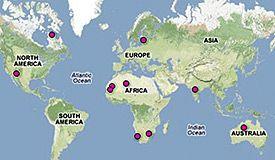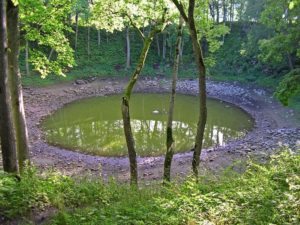World 🢖 Australia and Oceania 🢖 Australia 🢖 Western Australia
Impact craters 🢔 Geological wonders 🢔 Categories of wonders
Wonder
Wolfe Creek crater
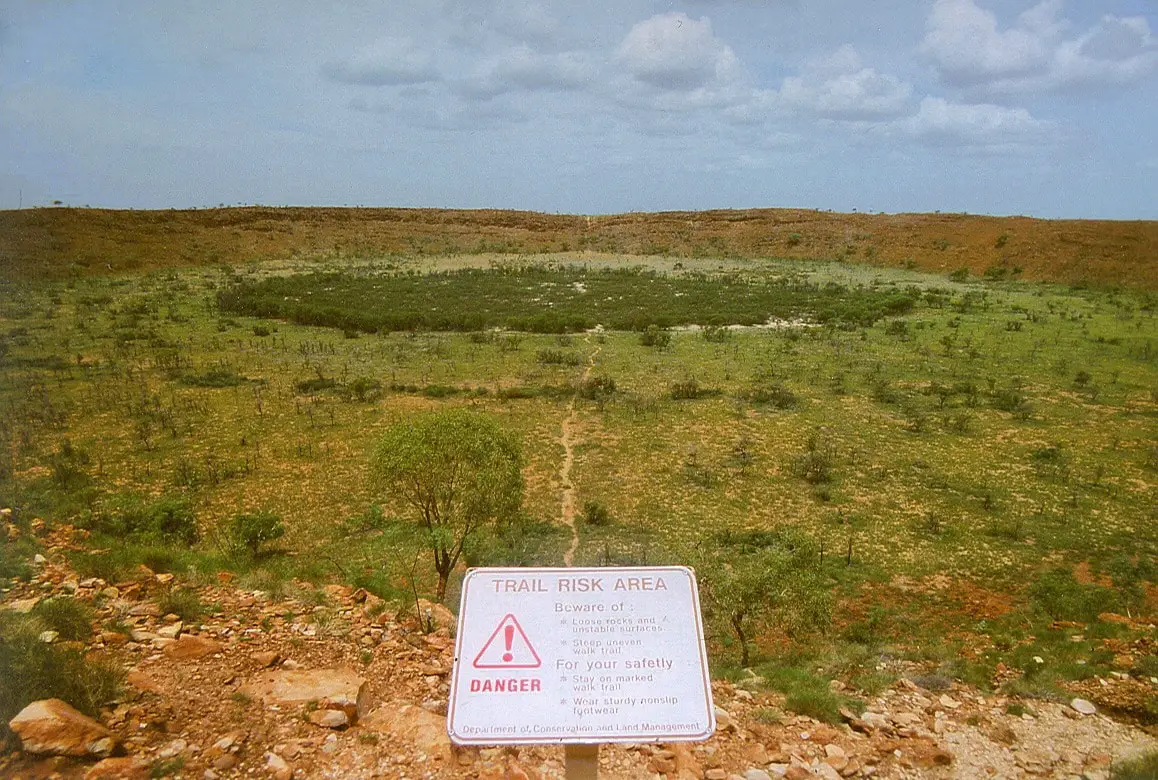
 In short
In short
Wolfe Creek crater is one of the most impressive impact craters on Earth, sometimes compared to the most impressive one – Meteor crater (Barringer crater) in Arizona, United States.
 47.0%
47.0%
GPS coordinates
Location, address
Alternate names
Diameter
Depth
Age
Map of the site
If you see this after your page is loaded completely, leafletJS files are missing.
 In detail
In detail
This comparison with Meteor Crater is a matter of taste – the Pingualuit crater in Canada or Lonar crater in India are magnificent natural landmarks as well, several more craters (e.g. in Algeria and Mauritania) are very impressive as well. Nonetheless Wolfe Creek crater is highly unusual, magnificent natural landmark.
Aboriginal legends
This crater – Kandimalal – was well known to local Djaru people and is the centerpiece of several local legends. Local people even considered that it has been created by a fallen star, the legend seems to tell a story about real meteorite impact!
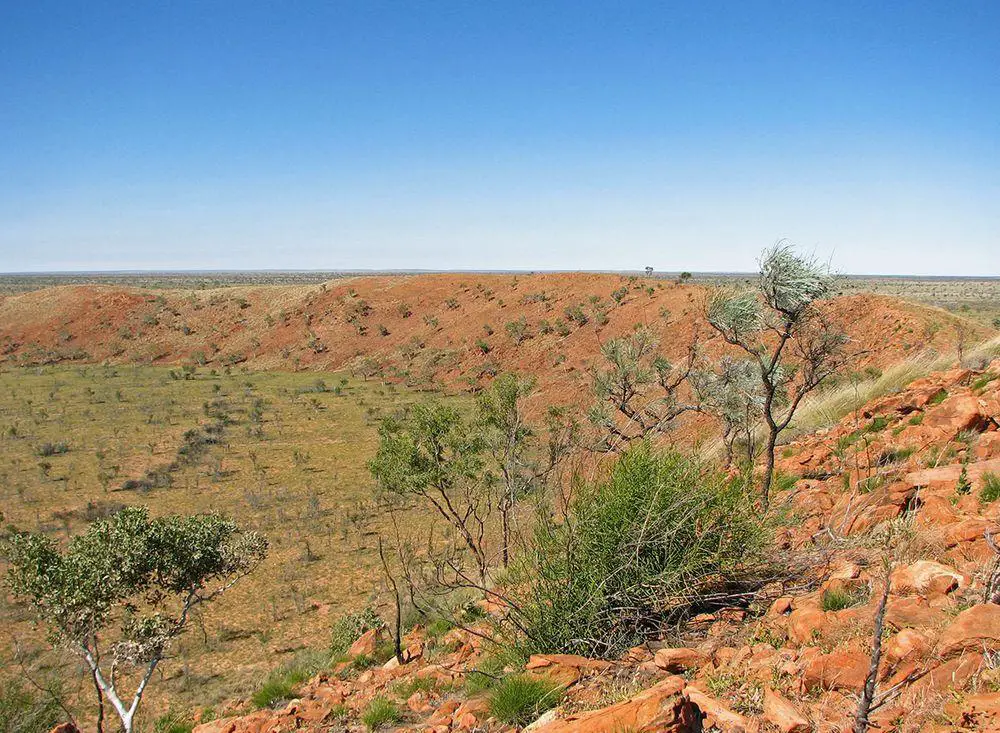
According to this legend once upon a time a crescent moon and evening star passed each other too close. The evening star became too hot due to this and fell to the ground.
As the star hit the ground, there was great explosion, flash and giant cloud of dust.
Another legend tells that the rainbow snake named Kalpurtu came out from the underground through the crater (another rainbow snake meanwhile created the nearby Sturt Creek). According to legend sometimes a bright light shines from the crater, also the giant snake can be seen sometimes.
Aboriginal art of this region often depicts the crater and rainbow snake.
Discovery by scientists
Crater was noticed from the air by geologists Frank Reeves, N.B.Sauve and pilot Dudley Hart on June 21, 1947. Two months later they reached the crater on the ground.
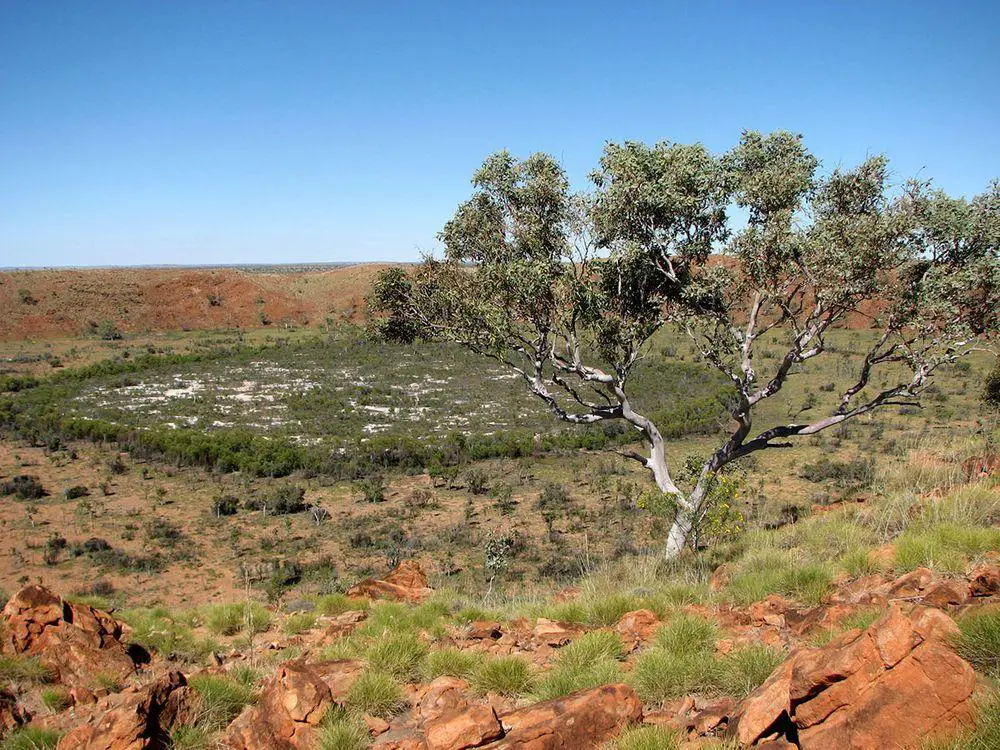
Frank Reeves named the crater after the adjacent Wolfe Creek, which in turn was named after Robert Wolfe – local prospector and storekeeper during the gold rush.
Size of crater
Average diameter (from rim to rim) of this crater is 875 m. Rims of crater rise 25 – 35 m above the surroundings. Present depth of crater is up to 60 m below the rims and up to 25 m below the surroundings.
Rims of crater are up to 40 degrees steep.
In the central part of crater is located a white area with sediments of gypsum – traces of ephemeral lakes which appear after the rare summer rains.
Conditions for life inside the crater are more beneficial due to porous ground, presence of water and shade. Here grow even some larger trees and many other plants, animals here are met more often than elsewhere.
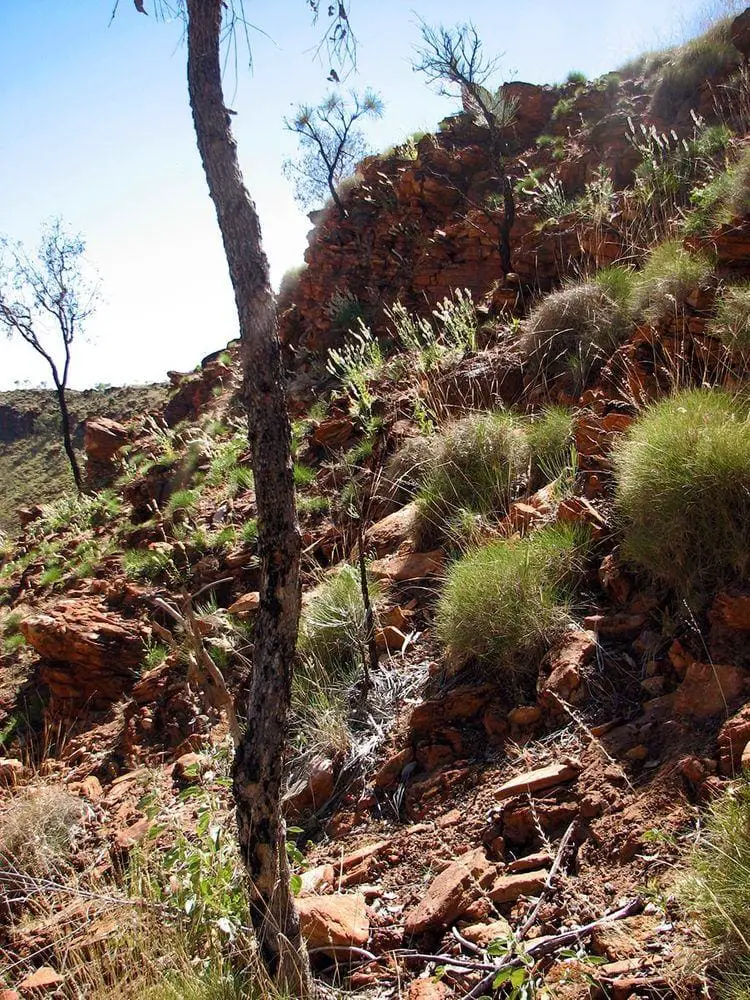
Impact
Crater was created by more than 50 000 tonnes heavy meteorite less than 300 000 years ago.
This meteorite fell with the fantastic speed – approximately 15 km per second. Meteorite exploded when it hit the laterites and 700 – 800 million years old Precambrian quartzite.
The powerful explosion melted the rock and scattered impressive blocks of red-brown quartzite and pieces of meteorite around the crater.
Initial depth of crater was some 120 – 150 m. Later it was partly filled with sand and gypsum.
Medium octahedrite
This impact was caused by a meteorite consisting of iron and nickel – medium octahedrite (IIIAD meteorite).
Crater and its vicinities (even 3.9 km far from the crater) contain many pieces of meteoritic mass. Some pieces have been well preserved, others have turned into "shale-balls" – up to 250 kg heavy clusters of balls from iron oxide.
Two previously unknown, very rare minerals have been discovered in this site – reevesite (named after Frank Reeves) and cassidyite (named after William A. Cassidy who mapped the crater).
Wolfe Creek crater is the second largest crater in the world (after Meteor crater in Arizona) where peaces of meteorite have been found. Generally in larger explosions the meteorite evaporates.
References
- Outback Australia – travel guide. Wolfe Creek Meteorite Crater National Park. Accessed on January 16, 2013.
Wolfe Creek crater is included in the following articles:
 Linked articles
Linked articles
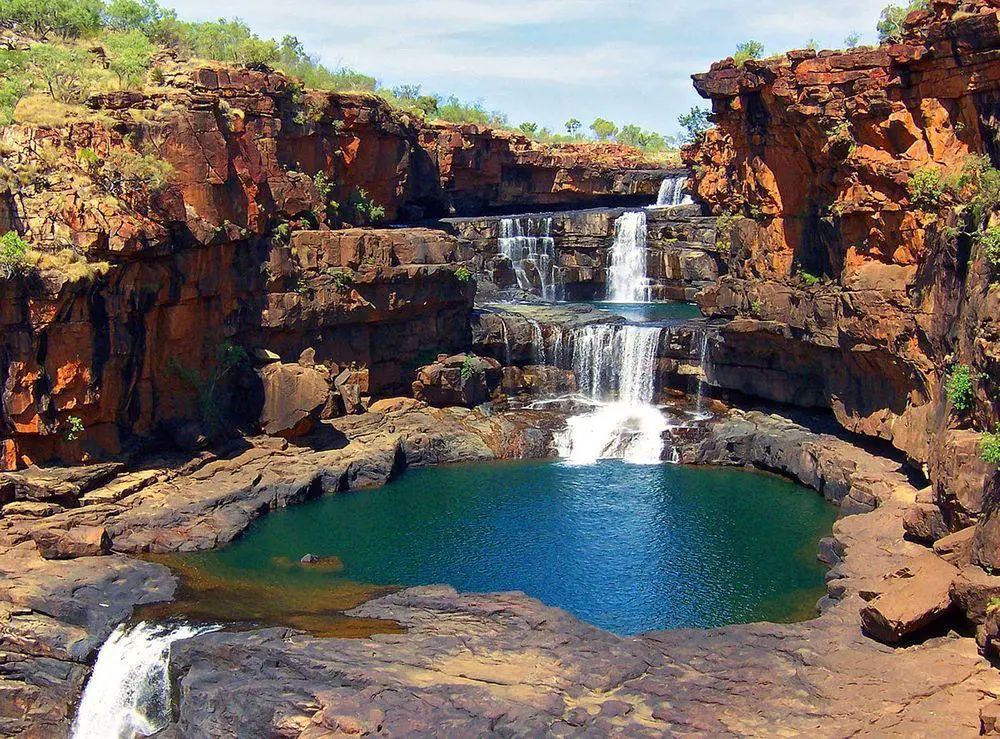
Wonders of Western Australia
This giant Australian state is spectacular and very rich with unusual landmarks. Highlights of Western Australia are refuges of biodiversity in remote parts of the desert, amazing cliff formations, and unique aboriginal art.

Wonders of Australia
The enormous and diverse area of Australia contains countless amazing and unique monuments. Parts of the country have not been thoroughly investigated and sometimes there are reported new, surprising finds.
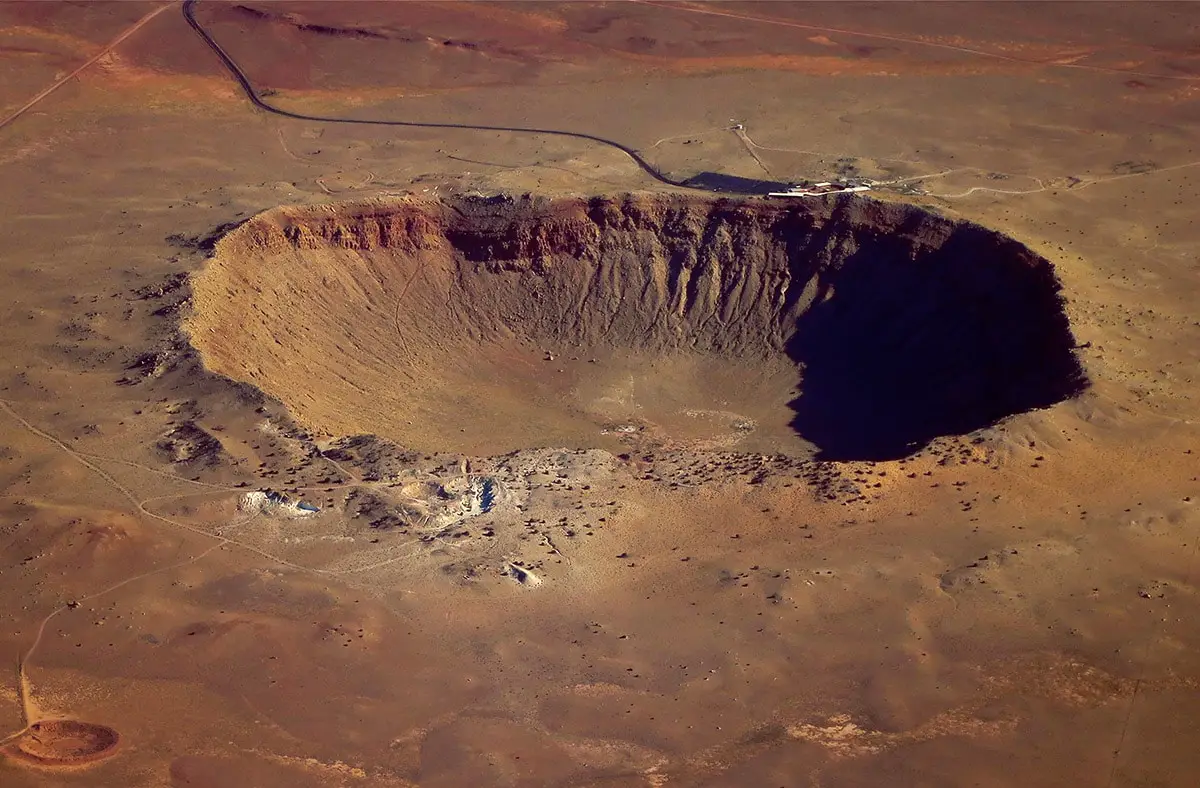
Impact craters
There are many pieces of solid matter flying around in space. And VERY frequently they fall on the surface of the Earth. There are estimates that every year on Earth fall 18,000 – 84,000 meteorites larger than 10 grams: e.g. one meteorite every 6 – 30 minutes.
This category includes outstanding impact craters – detectable scars on the surface of Earth left by a body coming from outer space. The category includes also meteorites – natural objects from outer space.
 Recommended books
Recommended books
Meteorites & Meteorite Impact Craters Around the World
Meteorite Craters Around the World – throughout Earth’s history, meteorites have pummeled the planet’s surface. These collisions have caused mass extinctions and even climate change on a global scale.
Rocks from Space
This popular nontechnical introduction to the fascinating world of meteorites, asteroids, comets, and impact craters is now even better! With more than 50 new photographs and updated illustrations, new and expanded appendixes, and some fun cosmic humor, Rocks from Space, Second Edition, journeys into the last frontier for close-up looks at the latest astronomical discoveries.

